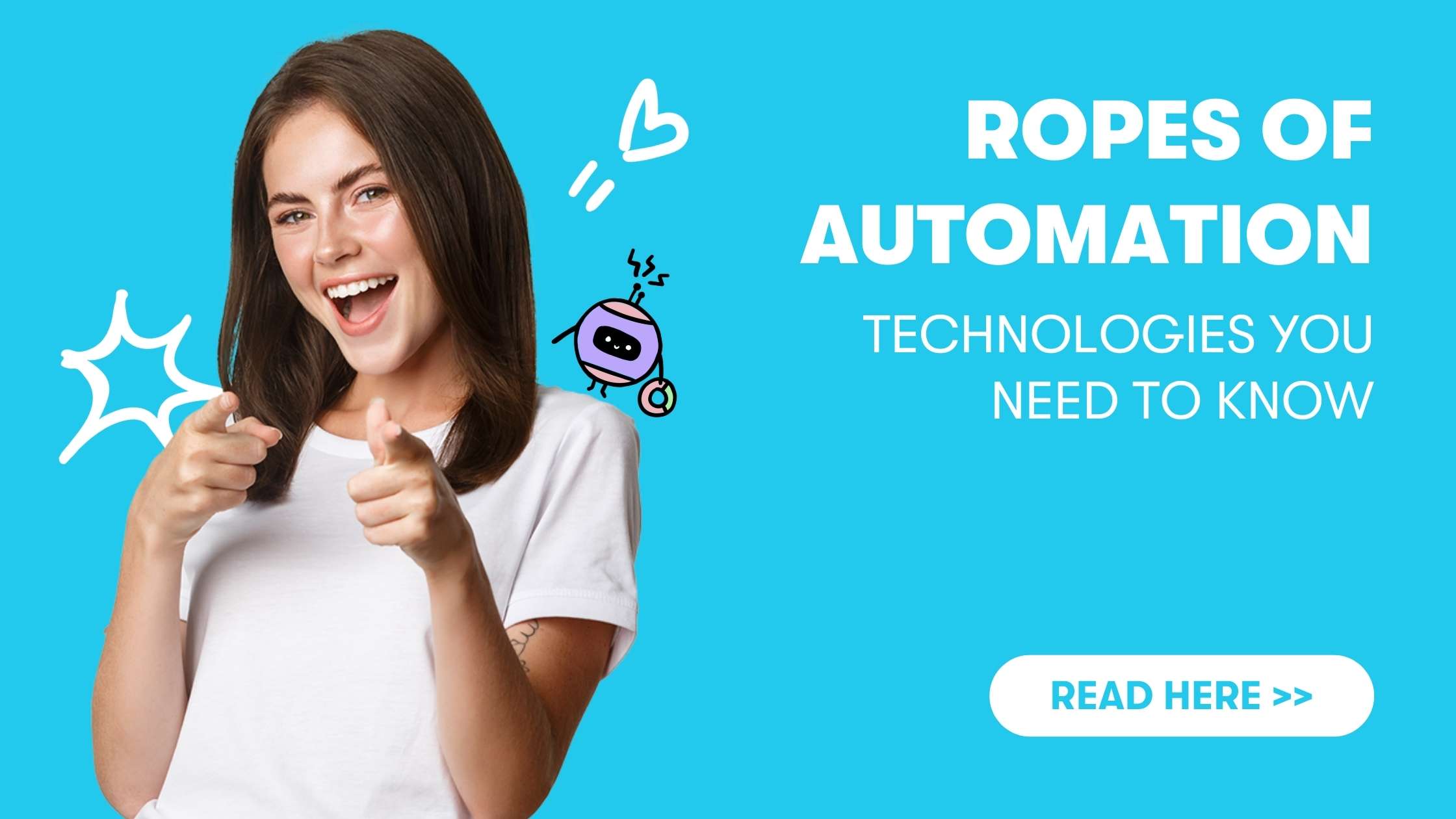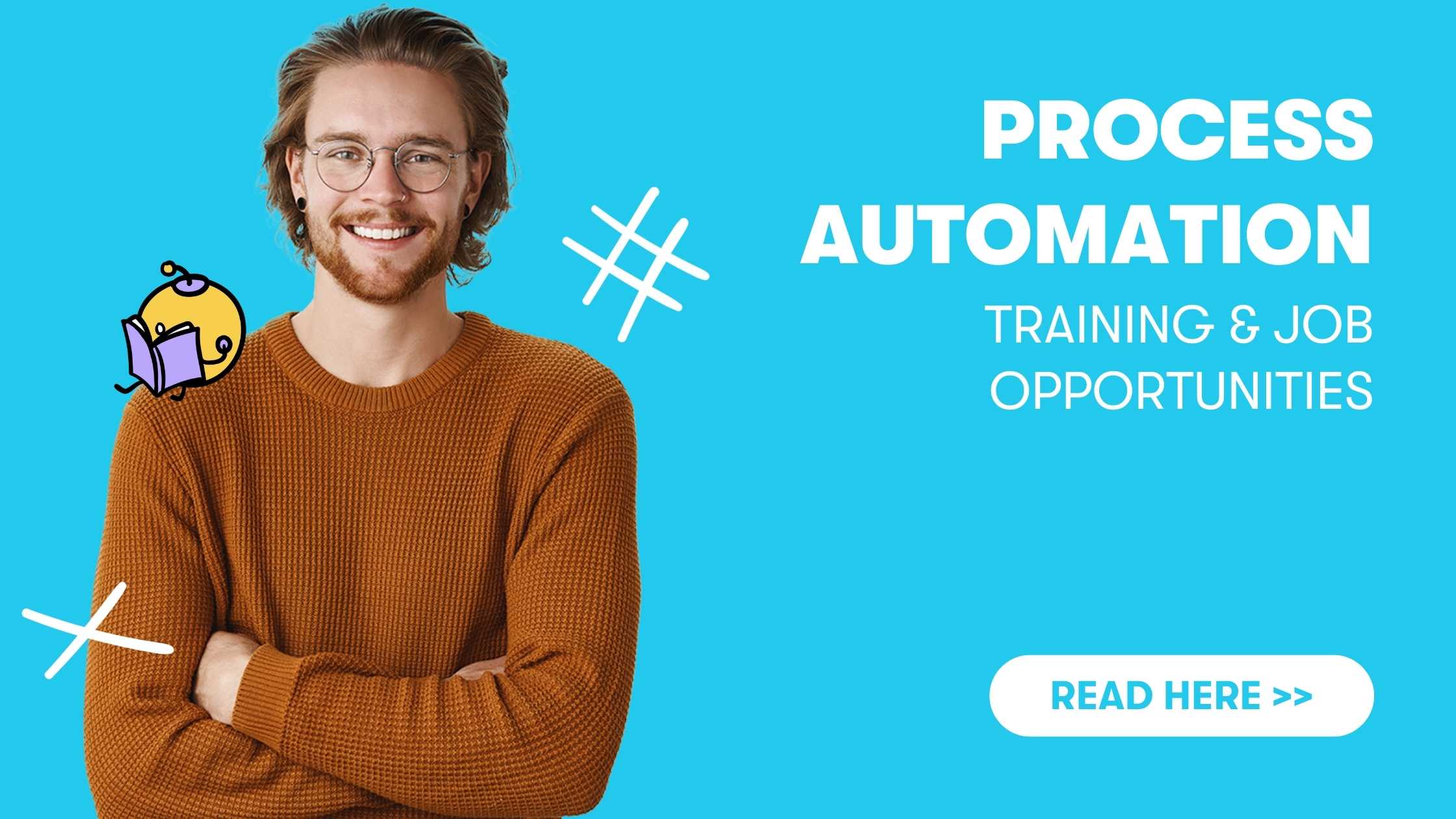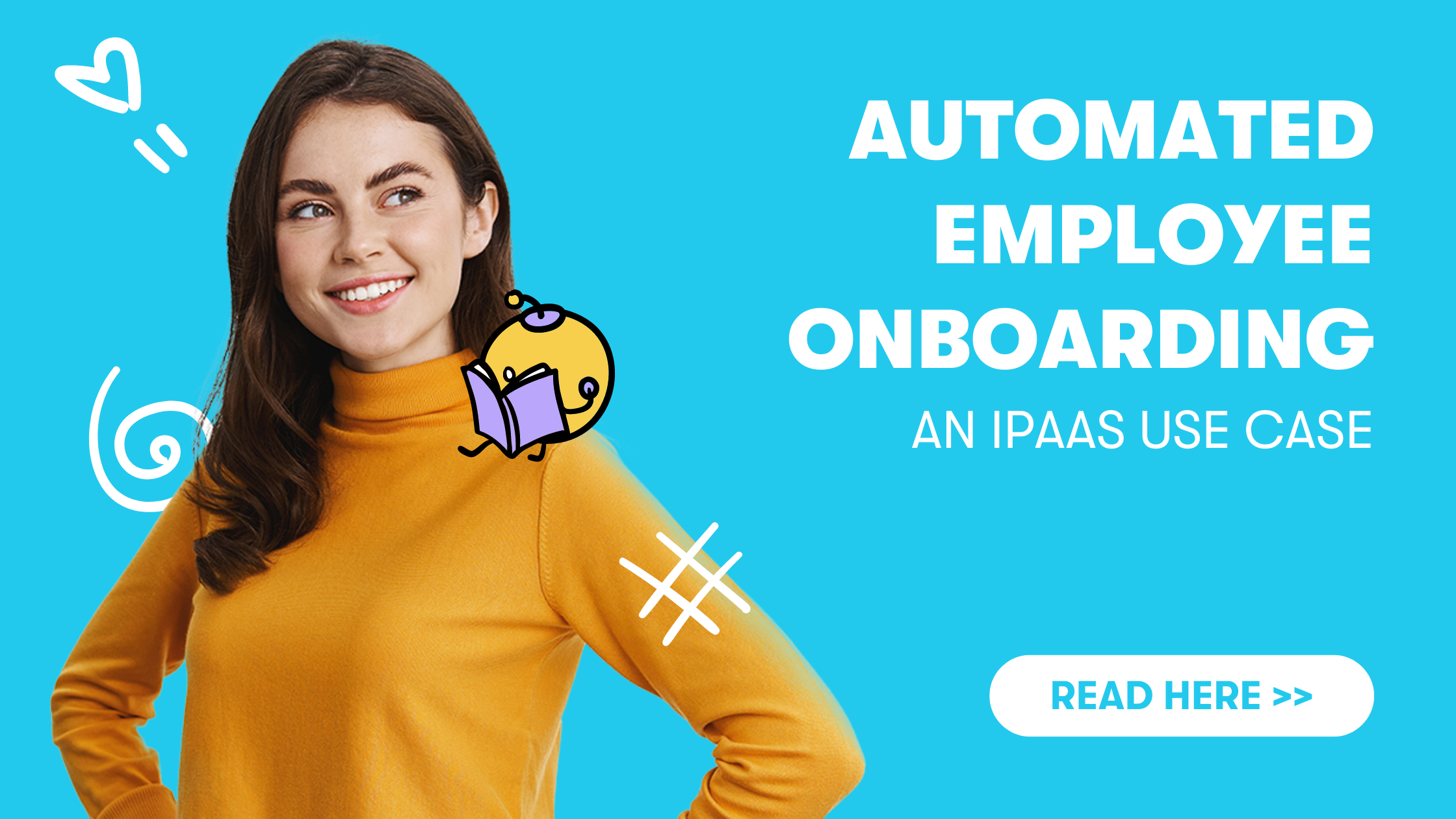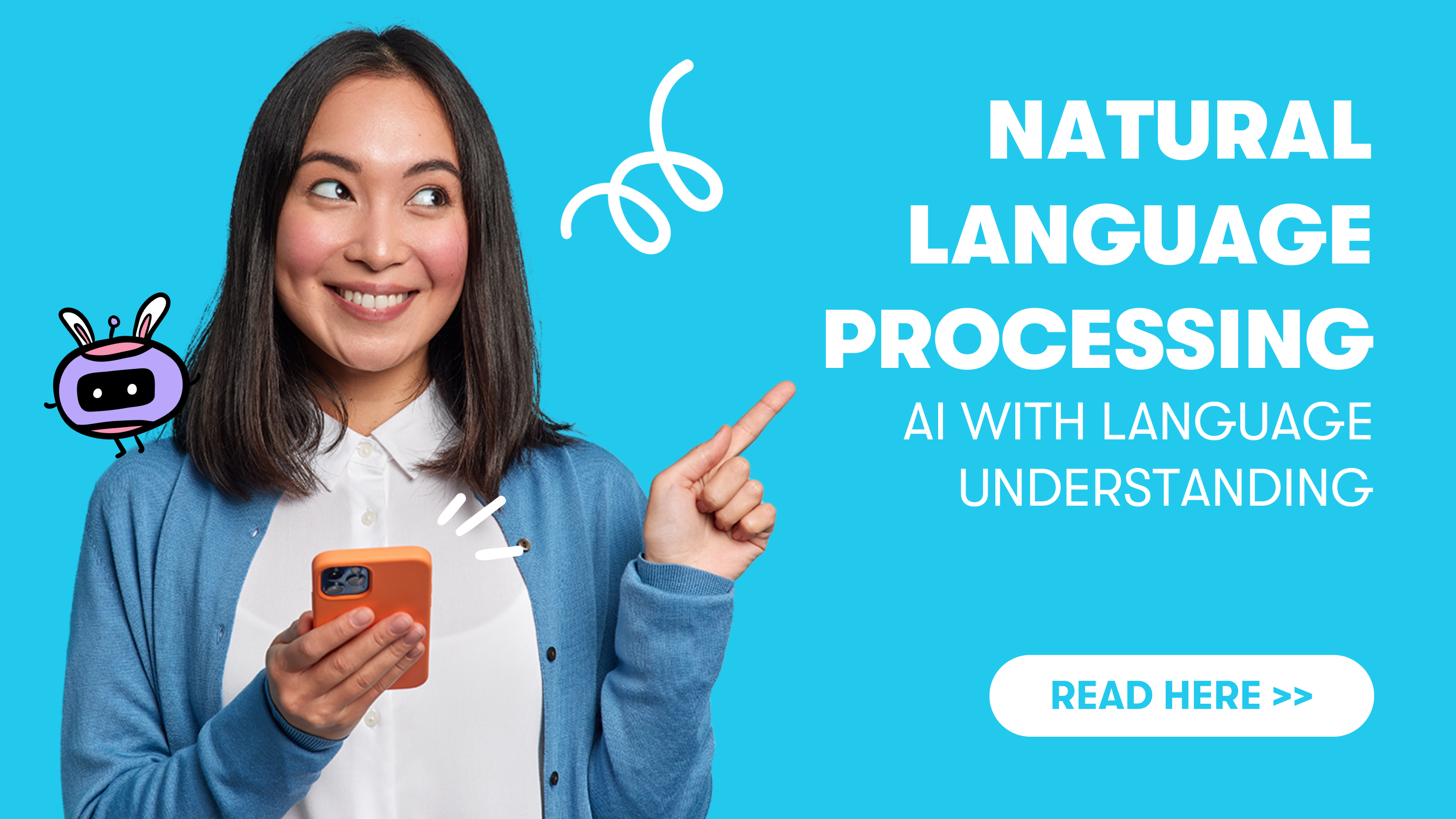Automation is frequently mistaken for being a tool, but it’s much more than that. It consists of many different aspects and technologies, all contributing to one goal: cutting out the tedious and repetitive work and letting workers focus on more relevant jobs.
More importantly, automation has evolved into many different sub-categories, each with its own use. Four buzzwords of automation technologies you’ll often come across are:
- RPA (Robotic Process Automation)
- NCLC (No Code/Low Code)
- IPaaS (Integration Platform as a Service)
- AI (Artificial Intelligence)
- Hyperautomation
All of these “branches” or technologies of automation are used by companies to automate processes — sometimes alone and sometimes combined. Therefore, understanding automation ultimately means understanding each of its aspects, so let’s look at each of the four branches in detail.
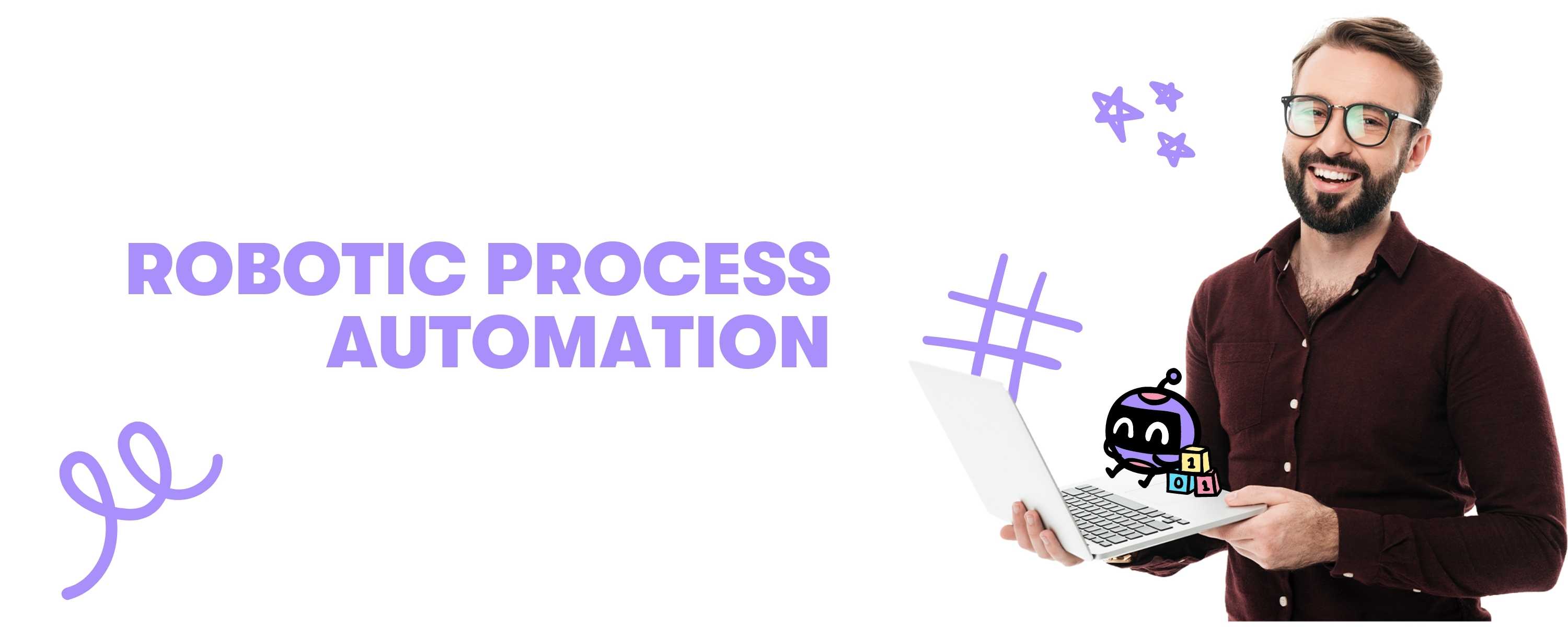
The Hype Is Real: Robotic Process Automation
RPA or Robotic Process Automation is a popular form of business process automation that relies on robots to automate processes. An RPA expert can build, deploy, and manage software robots that emulate what humans are doing and how they interact with software.
The difference between RPA and traditional automation is that the latter features backend logic. Robots can understand the screen and the actions humans take on it. They mimic what humans do on the computer screen. They can copy every click we make and entirely take over simple routine processes. RPA alone is the best fit for small processes and simple steps, but it can be combined with other automation technologies to automate complex processes involving several systems.
It’s safe to say that robots can perform a wide array of tasks, with the only difference being that they can do them much faster and with much more efficiency and accuracy. Bots will do everything with 100% accuracy if you teach them the process, meaning there won’t be any room for careless mistakes that humans would usually make. This also means that they won’t be able to adapt to even the simplest change in the process, meaning you’ll have to teach them the steps they have to take for that change to ensure they’re performing well.
Humans will have to check on them and sometimes adjust their actions only if there’s a change in the business process. They can also focus on more relevant tasks and leave the routine up to robots.
RPA is nowadays seen as the “default” automation technology. It’s basically an equivalent of automation and, despite having apparent limits, it’s still a powerful technology mainly used to free up employees’ time.
A Real-Life Example of Using RPA
RPA is already used in a spectrum of business areas and departments within an organization. One of the examples commonly used to showcase the power of RPA is the employee onboarding process.
When new employees need to join a team in an organization, there’s a complex process behind that with a lot of paperwork exchange between different departments. Senior staff often needs to devote a lot of time helping the new members.
RPA can help by taking over and streamlining the onboarding process. It can collect and analyze the necessary information and so on. Robots can send the information to relevant parties and take care of the paperwork.
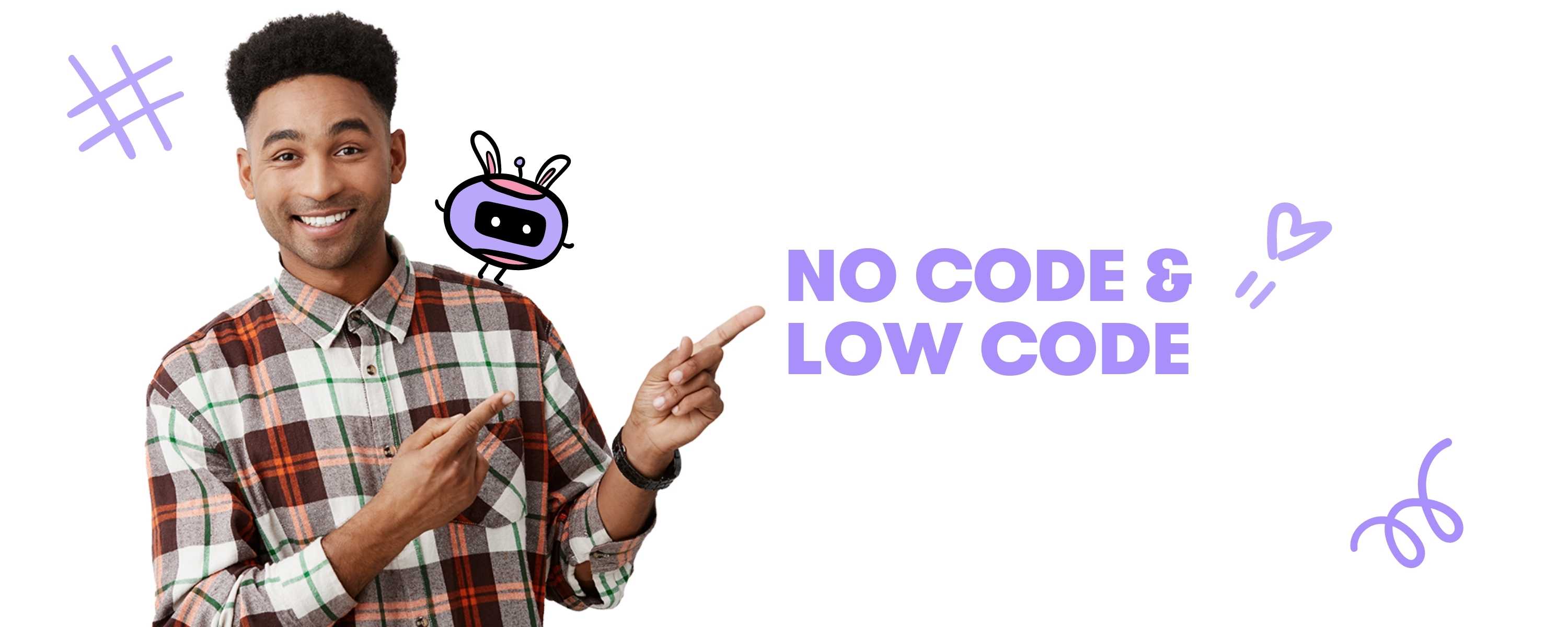
Automation For Everyone: No Code/Low Code
The word automation may sound scary to non-tech people who might believe they need extensive coding knowledge to be able to automate business processes. While in-depth coding knowledge might be required in some extreme cases, automation has reached the no-code/low-code stage (usually referred to as NCLC), meaning it can be done even if you have little to no programming skills.
This is possible thanks to specialized NCLC automation platforms that feature intuitive drag-and-drop interfaces to mimic processes.
Even though low code and no code refer to the same type of automation tool, these are two different things that could make a significant difference.
- Low Code – Most low-code tools eliminate up to 90% of coding, but they are still intended for developers who will save a lot of time by not writing every single line for automation. They’ll often use visual blocks of existing code and a drag-and-drop interface that still allows them to alter the code and add their own lines. Low code automation tools are perfect for complex workflows that will require coding at some point.
- No Code – No code software is mainly aimed at citizen developers, employees with no technical and coding knowledge who want to develop an app that would otherwise require coders. No code platforms contain building blocks that non-tech users can quickly arrange and build an app without writing a single line of code. The entire process is simplified and streamlined. The main advantage is that one can promptly respond to the ever-changing business needs, while the main disadvantage is that these platforms feature fewer automation options and customizability compared to low-code apps.
Even if you don’t know how to code or use low code platforms, you’ll still have to understand how automation works, optimize and manage business processes, and set up the logic behind an automated process.

The Power Of The Cloud: IPaaS
It has never been easier to collect and analyze data for businesses, but the entire process has become quite complex too. Organizations often use various applications — and even entire systems — to manipulate data. The problem is that these apps sometimes cannot “talk” to each other and process the same data. One way to connect them is using their APIs, but sometimes that’s also not an option. That’s where IPaaS comes in.
IPaaS stands for Integration Platform as a Service, and it’s a set of tools for automation for integrating apps built in different environments. Businesses often run many systems and apps that aren’t connected and use IPaaS to make them work in unison.
IPaaS platforms are usually no-code, meaning you don’t need to have coding knowledge to learn how to use such platforms. Of course, most such solutions also feature the low-code variation, often reserved for professionals who want to go beyond the standard IPaaS services.
An IPaaS platform features pre-built connectors, as well as various maps and business rules that make it easy and convenient to develop and set integration flows into motion.
The service part of IPaaS means that you usually need to subscribe to the platform to start using it. After subscribing, you must select the applications you want to connect and configure your field mapping. Everything else is handled automatically by the platform, including governance of data, updates, security upgrades, and more.
Popular IPaaS Benefits
Some of the main benefits that companies receive from using IPaaS include:
- Cloud-hosted – Companies relying on IPaaS do not have to spend thousands of dollars purchasing licenses for using software nor pay for upgrades and additional features. Everything is on the cloud, and it’s up-to-date.
- Managed service – iPaaS services that implement integration solutions on an integration platform significantly benefit organizations lacking integration capabilities. With a single IT person involved in specifications and end-to-end testing, companies can develop and deploy solutions much faster.
- Fast deployment – IPaaS can show its real values to organizations because it can quickly deploy a solution and put it to use. Short development and deployment cycles are of essential benefit for huge ecosystems that would otherwise take years to implement.
- Scalability – IPaaS can quickly scale and meet organizations’ needs, even when adding new connections to existing solutions.
- Data enrichment and validation – Data needs to be true and relevant, and manually validating and enriching it could take a while. Luckily, IPaaS takes care of that as well.
Other indirect benefits of using IPaaS are:
- A chance to automate processes across most departments.
- Communication between different applications.
- Reduction of repetitive work, helping workers focus on more important tasks.
- Automatic analysis and insight into relevant business data.
- A comprehensive overview of many business processes inside of an organization.
Read about a use case published on our blog when iPaaS was used to improve the employee onboarding process.

The Future Is Now: Artificial Intelligence
Artificial intelligence is modeled after human intelligence, and the term AI is used to denote a specific technology that mimics our intelligence. AI has become omnipresent in the contemporary world — an inevitable part of almost every big organization that offers digital services or products.
AI is often misunderstood, as the technology portrayed in the movies is far from what we’re dealing with at the moment. There are technically three layers of AI:
- Weak AI – This type of AI can perform specific tasks one at a time. It relies on human assistance to understand the parameters for learning algorithms and execute them. They also need humans to help them define what’s relevant and provide them with proper data for training.
- Powerful AI – Powerful AI doesn’t rely as much on humans and can perform a wider range of functions. Moreover, it can teach itself how to solve new problems, and it continuously evolves.
- Conscious AI – A machine develops its own consciousness, just like humans. Apart from the ability to solve problems, it can also make plans for the future, learn, and function pretty much like any human being, but with much higher computing power. At the moment, conscious AI only exists in theory and in movies.
The main difference between human and artificial intelligence is that the latter can process much faster than humans. Like us, AI can analyze data, deduct patterns, and act accordingly.
AI is sometimes mistaken for automation, as both can take over processes, but there are important differences between the two. Essentially, automation is a set of pre-programmed rules for automating repetitive tasks. In contrast, AI is programmed to seek patterns and learn by itself to understand a process and automate it.
You could say that automation is the hands. With “normal” automation, you need to instruct the hands on what to do while the eyes are closed. Artificial Intelligence removes the cover from the eyes and makes automation more intelligent, allowing you to use its full potential.
Some of the most popular manifestations of AI include NLP and OCR.
- NLP (Natural Language Processing) – Human language is complex, but AI is getting better at understanding it. Apart from grammatical rules, AI can now understand the context and the co-text for improved meaning. By processing human language, NLP can help with automating processes where a lot of documents have to be read and analyzed, saving hundreds of hours for companies. Find out more about NLP here!
- OCR (Optical Character Recognition) – What NLP is for human language, OCR is for human vision. We’ve reached the point in time where we managed to teach the AI to recognize and analyze objects, just like we do, except faster (but not always better). Still, OCR can help with any process that requires identifying and analyzing objects. Perhaps the most famous example is the process of identifying passengers from their passport pictures at airports. Find out more about OCR here!
Besides NLP and OCR, AI comes in many shapes and sizes, and some are more frequently used in automation than others. The two main branches of AI, without which OCR and NLP wouldn’t be possible to start with, are machine learning (ML) and deep learning (DL).
Want to dive deeper into these technologies? Check out this article!
- Machine Learning refers to the overall ability of computers to learn how to do something without being explicitly told via a programming language. Whenever algorithms improve when exposed to more data over time, we’re talking about ML.
- Deep Learning is a special type of ML — its subset if you will. It’s based on multi-layered artificial neural networks modeled after the human brain and can learn from large amounts of data.
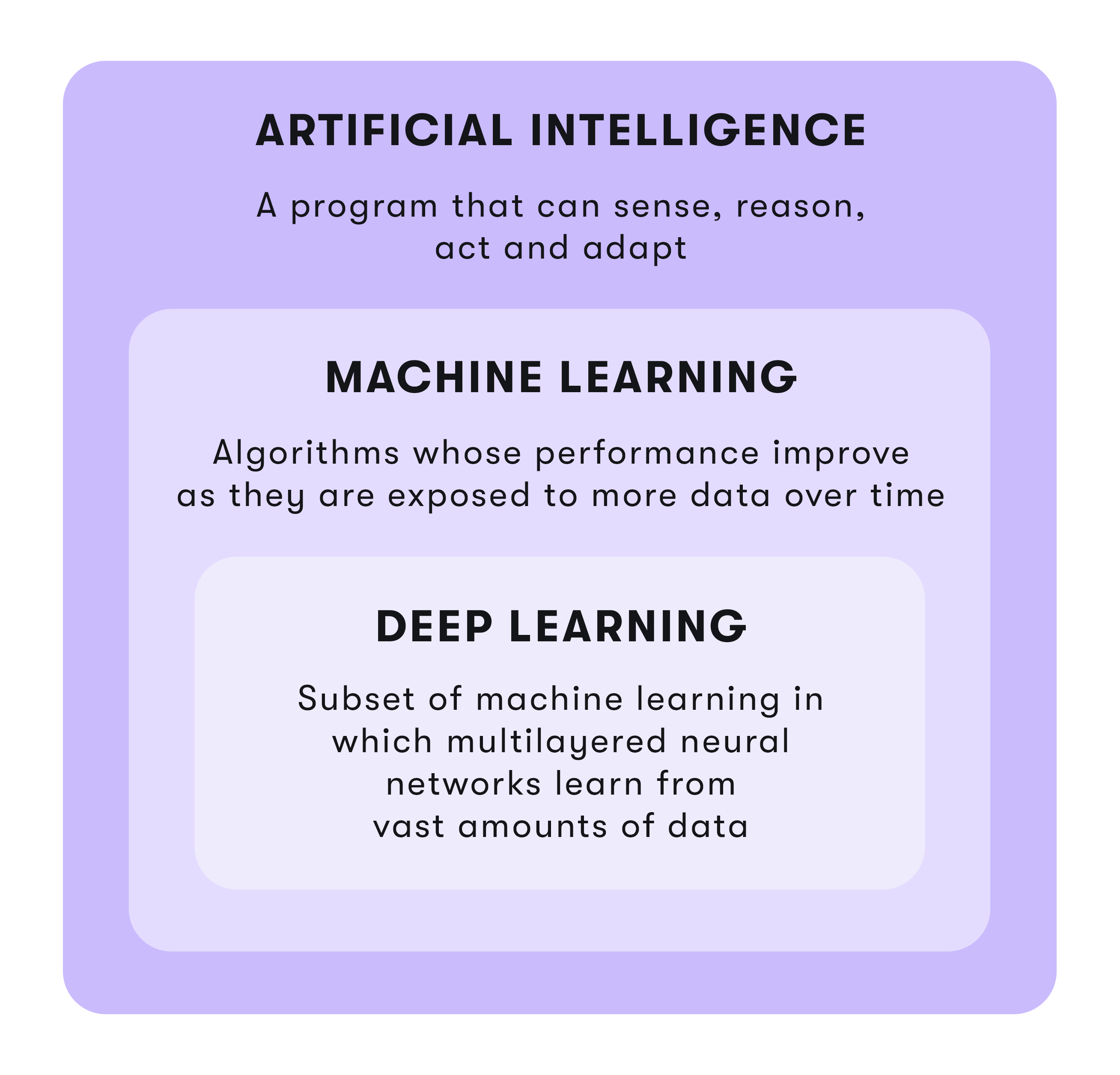
AI (and all subsequent technologies derived from it) is almost never used separately in automation. It’s a tool that, in combination with other tools, helps organizations automate all kinds of processes — even those that cannot be automated with traditional automation solutions. AI effectively introduced Hyperautomation.

The Peak Of Automation: Hyperautomation
Unlike RPA, AI, or IPaaS, Hyperautomation is neither a technology nor a specific tool. Instead, it’s a contemporary approach to automation — a strategic business initiative, if you will. An organization aiming to utilize Hyperautomation will combine all the necessary ingredients, including RPA, iPaaS, AI/ML, and various Intelligent Business Process Management Systems, to automate every possible step of the majority of processes in it. By focusing on Hyperautomation, companies can achieve their maximum potential and focus on creative and innovative work instead of losing time on small tasks.
The idea of a company with each process automated is still just that — an idea. Even though we can now automate more than ever, it’s safe to say that Hyperautomation still doesn’t exist in its purest form. Still, automation experts are developing all related technologies, and we can automate more each day.
Hyperautomation includes many technologies, as displayed in the picture below.

Final Thoughts on Automation Technologies
Automation has come a long way, from automating a couple of simple tasks to automating complex processes. During its evolution, it paved the way for many automation technologies and tools, including RPA, iPaaS, AI, and more.
Hopefully, you now have a better understanding of what each of these terms means and how they are used in organizations to take automation to another level.
